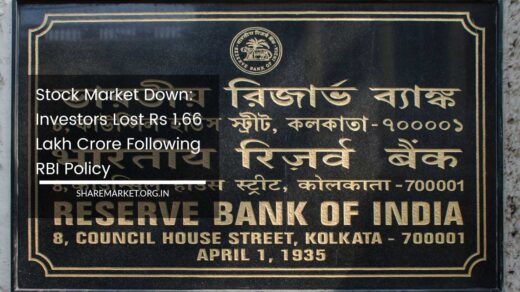Axis Bank Q4 Results: Net Profit at Rs 7117 Cr, Rs 1 Dividend Declared
Axis Bank Q4 FY2025 Results: Net Profit Marginally Lower at ₹7,117 Crore; Asset Quality Stable, ₹1 Dividend Proposed
Axis Bank, one of India’s leading private sector banks, announced its financial results for the fourth quarter ended March 31, 2025, showcasing a marginal decline in net profit but solid overall performance across key parameters.
The bank reported healthy income growth, continued improvement in asset quality, and proposed a final dividend for shareholders, reflecting resilience in a challenging macroeconomic environment.
Earnings Snapshot: Marginal Decline in Net Profit
For Q4 FY2025, Axis Bank posted a standalone net profit of ₹7,117.50 crore, slightly lower than the ₹7,129.67 crore reported in the same quarter last year.
This decline, though marginal, reflects cautious provisioning and moderated growth in interest income amid fluctuating market conditions.
Total income for the quarter rose by 5.6% year-on-year, reaching ₹38,022 crore, up from ₹35,990.33 crore in Q4 FY2024. This increase was driven by growth in interest income from retail and corporate loan segments and improved fee-based earnings.
The performance demonstrates the bank’s continued ability to generate revenue despite macro headwinds and a competitive lending environment.
Net Interest Income and Margins
The bank’s Net Interest Income (NII)—a key metric representing the difference between interest earned and interest expended—was strong during the quarter.
NII grew by 5.5% year-on-year to ₹13,811 crore, supported by steady loan book expansion and stable yields.
The Net Interest Margin (NIM), however, moderated slightly to 4.06%, compared to 4.22% in the year-ago quarter. The bank attributed the dip to higher cost of funds and increased deposit competition.
Nonetheless, NIMs remained above industry average, indicating efficient deployment of capital and sound credit risk management.
Non-Interest Income and Operating Performance
Non-interest income, which includes fee-based income, treasury gains, and income from trading and investments, contributed positively to overall revenue.
Axis Bank has been focusing on diversifying its income streams beyond interest revenue, and this strategy continued to yield results.
Operating expenses rose moderately due to ongoing investments in digital banking infrastructure, employee benefits, and branch expansion.
The cost-to-income ratio, a measure of efficiency, stood at 46.2%, reflecting the bank’s ongoing efforts to optimize operational costs while supporting long-term growth initiatives.
Asset Quality: Improving Trends with Minor Fluctuations
Axis Bank reported steady improvement in its asset quality metrics, a positive signal to investors and analysts.
The Gross Non-Performing Asset (NPA) ratio declined to 1.28% in Q4 FY2025 from 1.43% in the corresponding quarter last year and 1.46% in the previous quarter (Q3 FY2025).
This reduction reflects better loan monitoring, recovery efforts, and a more prudent approach to risk assessment.
On the other hand, the Net NPA ratio increased slightly to 0.33% from 0.31% in the year-ago quarter.
Although the change is minimal, it reflects a small uptick in net stressed assets due to sector-specific weaknesses and some residual pandemic-era restructured loans.
Total provisions and contingencies for the quarter stood at approximately ₹1,185 crore. Specific provisions for non-performing assets were ₹832 crore, while the remaining provisioning covered other standard and contingent assets.
Dividend Recommendation: ₹1 Per Share
In a move that reinforces shareholder confidence, the bank’s Board of Directors recommended a final dividend of ₹1 per equity share for the financial year ended March 31, 2025.
This dividend payout is subject to shareholder approval at the bank’s upcoming Annual General Meeting (AGM).
Once approved, the dividend will be distributed to eligible shareholders within 30 days from the date of the AGM. The bank emphasized its commitment to maintaining a consistent dividend policy aligned with long-term profitability and capital requirements.
Capital Adequacy and Fundraising Plans
As of March 31, 2025, Axis Bank’s Capital Adequacy Ratio (CAR) under Basel III norms stood at 16.61%, with a Common Equity Tier 1 (CET1) ratio of 14.12%.
These figures indicate a strong capital base, well above regulatory requirements, enabling the bank to absorb potential shocks and pursue growth.
To further bolster its capital reserves and support expansion plans, the Board approved fundraising proposals amounting to ₹55,000 crore—₹35,000 crore through debt instruments (including non-convertible debentures and bonds) and ₹20,000 crore via equity instruments such as Qualified Institutional Placement (QIP) or Rights Issue.
Loan Book and Deposits: Steady Growth
Axis Bank reported steady growth in its loan book, led by strong traction in the retail segment, especially home loans, personal loans, and credit cards.
Advances grew by approximately 14% year-on-year, indicating improved credit demand across retail, SME, and corporate sectors.
The bank’s deposit base also expanded, with total deposits increasing by around 11% year-on-year. The share of low-cost Current Account and Savings Account (CASA) deposits stood at around 44%, providing a relatively cheaper source of funds and supporting margin sustainability.
Digital Banking and Transformation Initiatives
Axis Bank continued to invest in digital transformation and customer experience enhancements.
During the quarter, the bank expanded its digital footprint through upgrades in mobile and internet banking platforms, improved cybersecurity, and AI-powered customer service tools.
Its “Digital First” strategy remains central to its growth blueprint, with over 65% of personal loans and savings account openings now occurring through digital channels.
These initiatives are expected to boost customer acquisition, reduce turnaround time, and improve operating leverage over time.
Management Commentary and Outlook
Commenting on the results, Axis Bank’s top management expressed satisfaction with the bank’s stable financial performance and reiterated their focus on growth, customer service, and risk management.
They highlighted the bank’s balanced approach—combining profitability, asset quality, and capital strength—as key to long-term value creation.
Looking ahead, Axis Bank remains cautiously optimistic. It expects continued demand in retail and MSME segments, better credit offtake with macroeconomic recovery, and enhanced profitability through digital innovation and cost control.
Final Remarks
Despite a marginal dip in quarterly profit, Axis Bank’s Q4 FY2025 results paint a picture of resilience and steady progress.
Strong income growth, improved asset quality, a healthy capital position, and a shareholder-friendly dividend policy signal the bank’s readiness to navigate evolving market dynamics while pursuing sustainable growth.
With digital initiatives gaining momentum and capital buffers intact, Axis Bank is well-positioned to capitalize on emerging opportunities in FY2026 and beyond.


















